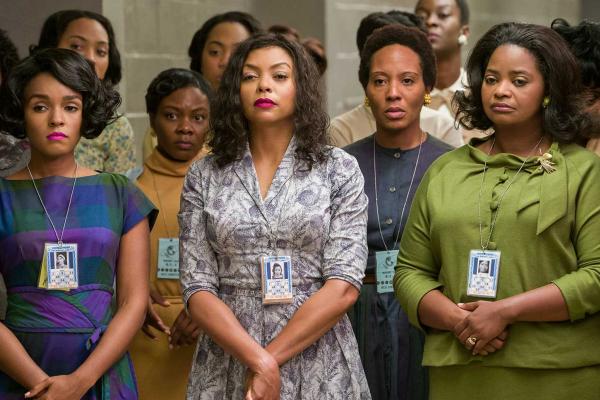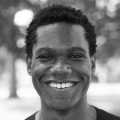Even if you haven’t seen Hidden Figures, the biopic about black women who worked at NASA in 1961 and this award season’s highest-grossing nominee for the Oscar for Best Picture, odds are you have watched, or heard about, the film’s bathroom scenes.
One bathroom sequence acts as a pivotal moment — black mathematician Katherine Johnson, the main character of Hidden Figures, reveals to her boss why she takes forty-minute-long breaks: The nearest bathroom for “colored ladies” is more than a mile away. The scene showcases the acting prowess of Taraji P. Henson, the actress who portrays Katherine Johnson, and her performance has been lauded by many.
Another bathroom scene, just moments later in the film, has garnered a similar level of attention — this time for its inaccuracy. In the scene, Katherine Johnson’s boss Al Harrison, played by Kevin Costner, uses a crowbar to tear down the sign hanging above one of the colored ladies’ restrooms on NASA’s campus, in response to Johnson’s earlier confession.
“Here at NASA, we all pee the same color,” says Harrison.
But this scene never happened. Harrison never took a crowbar to a “Colored Ladies Room” sign. He never solved Johnson’s dilemma of having limited accessibility to a legal bathroom. Harrison’s action is a fabrication framed as history, one that could easily be recognized as an insidious white savior narrative created and advanced by the white people who made the film.
Theodore Melfi, the director of Hidden Figures and a white male, doesn’t see it that way.
When asked by Vice News why the scene is included in the film, despite its erroneousness, Melfi replied, “There needs to be white people who do the right thing, there needs to be black people who do the right thing. And someone does the right thing. And so who cares who does the right thing, as long as the right thing is achieved?”
Melfi doesn’t see that, by having Harrison do in fiction what Harrison didn’t do in fact, the director is erasing evidence of the magnitude of racism's effect on black lives — to the point where something as simple as a bathroom break causes serious setbacks for black employees. Melfi's decision to include a fictional crowbar scene in the film shapes black history into something palatable for white people.
Melfi shields white viewers from the uncomfortableness of seeing the totality of the horror their counterparts inflicted on the black women who worked at NASA, and he does so at the expense of the agency of those women, portraying them as being in desperate need for a white man’s validation.
The truth is that they lived freely in the fact that their lives were just as valid as anyone else’s.
What actually happened — documented in the book from which the film is adapted, Hidden Figures: The Story of the African-American Women Who Helped Win the Space Race, written by Margot Lee Shetterly, a black woman — is Katherine Johnson refused to use NASA’s colored restrooms. She defiantly used the white bathroom, even though doing so was illegal.
A black screenwriter likely would have written that moment, and a black director likely would have kept it in the film. But the screenplay for Hidden Figures was written by Melfi and a fellow white screenwriter, and directed by Melfi.
Imagine that — a film about overlooked black women achieving excellence in a largely white profession, and yet no black women, let alone any black people at all, are asked to adapt or direct the project.
And therein lies a problem I’ve written about numerous times and will continue to speak about until the problem is rectified: Hollywood must diversify in all aspects of the filmmaking process, from what happens on set to what happens in the boardrooms of film studios.
But furthermore, there must be ample opportunity for people of color to tell their own stories and not have their intimate narratives entrusted to people who are largely incapable of recognizing the nuances of their lives.
If you don’t support racism, you should be for the cause of giving people of color an opportunity to tell their own stories through mainstream means. For what often happens when other people tell their stories is that those inauthentic portrayals become layered with hidden racism. We get additions like the crowbar scene in Hidden Figures, subtractions like the bold action Johnson took. We get abstractions of black people instead of complex human beings.
And abstractions — white people seeing three-fifths of black people rather than their true humanity — is what begat racism in the first place, and what enables it to continue.
I agree that, because of the film Hidden Figures, more people know of Johnson and her peers Dorothy Vaughan and Mary Jackson, true pioneers who played essential roles in NASA’s greatest space travel achievements. I agree that there is good in that fact.
However, most people who watched Hidden Figures know lies about Johnson and her situation. They don’t know the truth.
They watched her stand in the NASA control room during John Glenn’s launch into space, but they don’t know that she actually watched the takeoff from a television near her desk. They don’t know that she wasn’t allowed in the room, that when the door to the room slammed in her face onscreen, it remained shut off-screen.
They do not know.
For that knowledge, they’ll have to read Shetterly’s book, an honest telling of Johnson’s work and the work of her colleagues, a history that isn’t altered for the sake of white people.
Now that’s subversive, something you don’t see onscreen every day. Someone — preferably someone black, preferably a woman — should make a film out of that.
Got something to say about what you're reading? We value your feedback!

